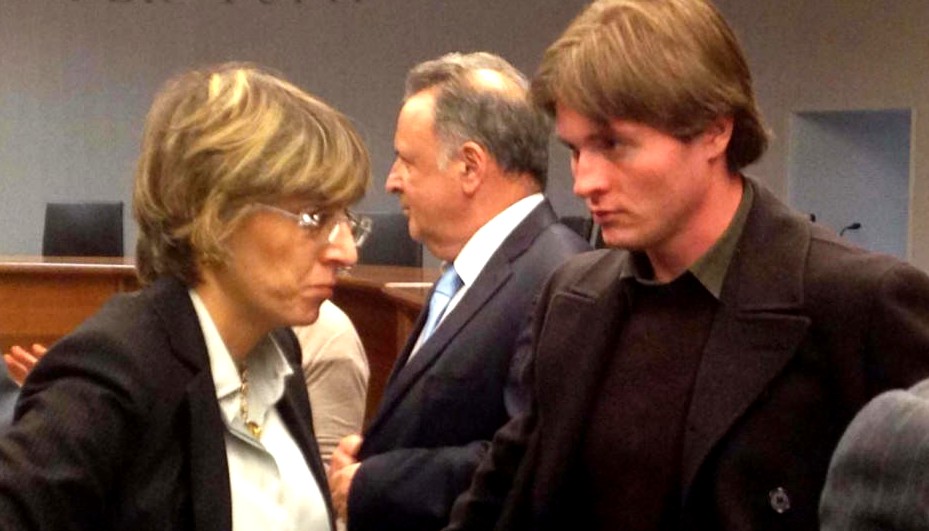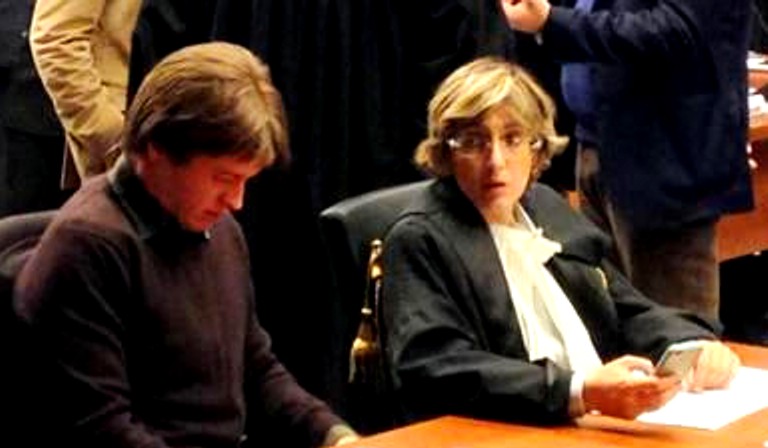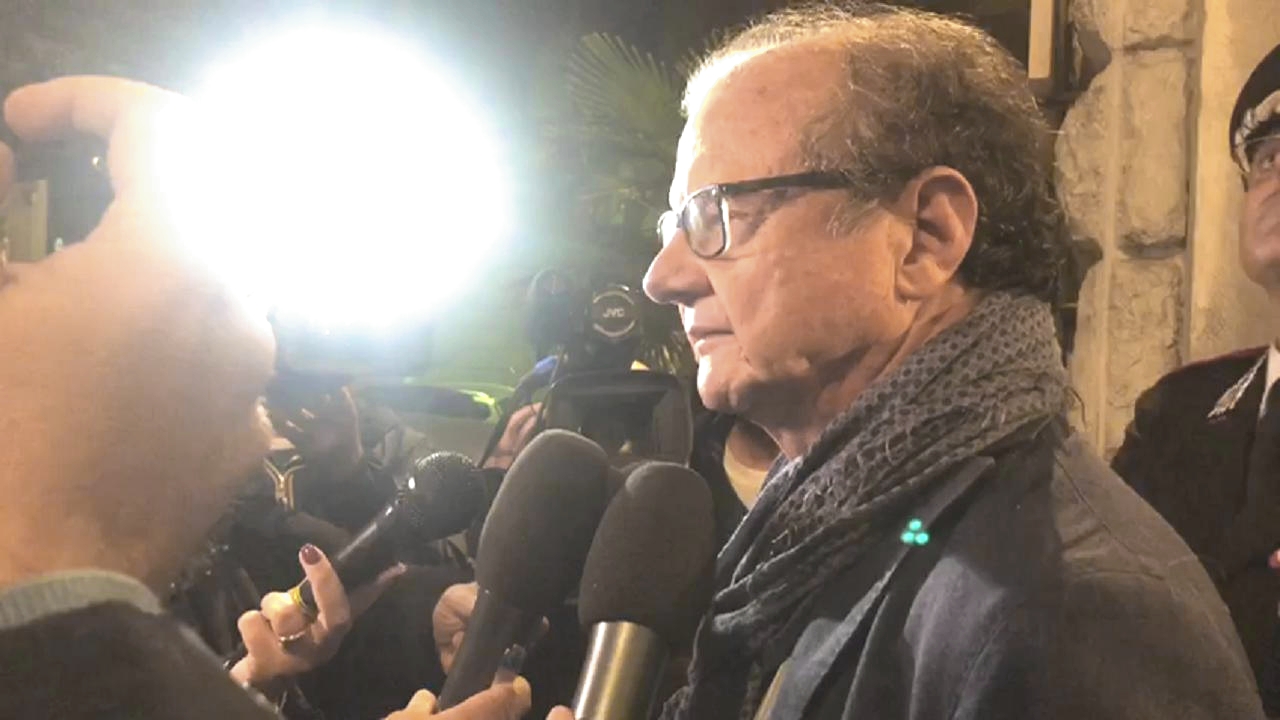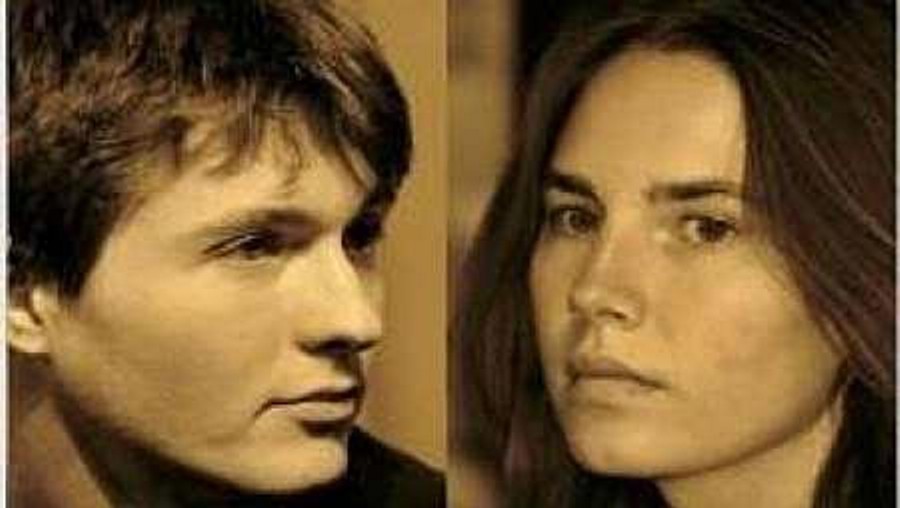
Category: Raff Sollecito
Monday, December 16, 2013
Appeal Session #6: Case For Knox’s & Sollecito’s Guilt - The Civil Parties
Posted by Our Main Posters
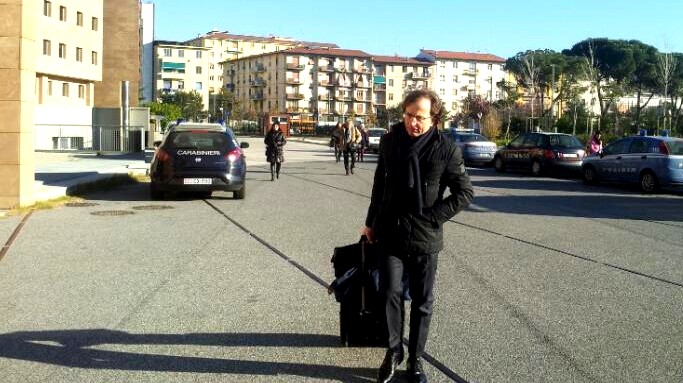
[Above, today: Dr Maresca, the Florence lawyer who speaks for the victim, arrives at the court]
7. Court resumes tomorrow
Court will resume at 9:30 am Italy time with the first of the summations for the defenses. When they conclude, probably in January, the prosecution will have a chance of rebuttal.
6. Reporting in English
Andrea Vogt has posted a detailed report from the court at The Freelance Desk, Scroll down to the heading “Update Dec 1t 2013”
5. Reporting in Italian #3
Amanda Knox and Raffaele Sollecito, accused in the murder of British student Meredith Kercher, were in the grip of a “murderous rage” fuelled by illegal drugs and alcohol, a lawyer for the victim’s family said Monday. Knox, Sollecito and a third person definitively convicted of the crime, Rudy Guede, had “no inhibitions” because of the drugs and alcohol they ingested before murdering Kercher in November 2007, charged Vieri Fabiani.
Only later did the “fear take over” and led to false explanations including a simulated break-in and robbery, and a false accusation against a bar owner in Perugia, where the murder occurred, added Fabiani. A Florence court is trying the case against Knox and Sollecito, who have been on trial twice before for the murder of Kercher. Both have said they are not guilty of the accusations.
Guede was convicted in a fast-track trial and is serving a 16-year sentence in the murder, but Italy’s top appeal court said it was unlikely he acted alone. Knox, who is in the United States and has not returned for this trial, and Sollecito each served two years in prison after a lower court convicted them of murder in 2009. An appeal court overturned those convictions in 2011 and in March, Italy’s highest court sent the case back to the appeals stage over aspects of the evidence it argued had not been properly examined before.
The supreme court ruled that the initial forensic evidence had been wrongly dismissed in the acquittal and a prosecution theory about a sex game that went wrong should be re-examined. Kercher, 21, was found dead on the floor of an apartment she shared with Knox on November 2, 2007. Guede’s DNA was found inside Kercher, on her clothes, and elsewhere in the apartment.
Fabiani said that a motive for the murder was “irrelevant” because the crime was committed while the trio were abusing substances. An Italian prosecutor has requested a 26-year prison term for Knox and Sollecito for the murder, plus a further four years for Knox for allegedly slandering bar owner Patrick Lumumba, whom she initially implicated during tough police questioning before later retracting, saying she had been confused.
The new trial opened in Florence in September, and a decision is expected on January 10.
Translation by The 411
4. Reporting in Italian #2
For the Kercher family it is “intolerable” that Amanda Knox on her website is issuing “invitations to collect donations in memory of Meredith” declared Dr Francesco Maresca, the lawyer for the parents and siblings of Mez, speaking in the Assize Court of Appeal of Florence, where judicial process continues for the murder of the young British student Meredith Kercher, which occurred in Perugia on the night of November 1, 2007 .
Dr Maresca asked the Court “to forget the opposing sides and all that is foreign to the process”, meaning the media coverage of the controversy being generated in the U.S. in the legal defense of Knox, as they should also “forget the statements made in court a few weeks ago by Raffaele Sollecito, who is now returned to a “vacation” in Santo Domingo”
Dr Maresca also pointed the finger at Knox for her book, for which she signed “contracts in the millions” and also retains “a person to handle public relations”. Finally, he invited the Court to also forget “those journalists who are inspired by the freedom of delirium and not the freedom of the press.”
Many elements confirm the original verdict. “We have no doubts about the guilt of the accused - there are so many elements to confirm the sentence”.
The family of Meredith Kercher, said the lawyer, will be in Florence on the day of the judgment of the appeal for the murder of the young British student by the defendants Amanda Knox and Raffaele Sollecito .
This was a heinous crime committed knowingly. “We ask the Court for truth and justice for a heinous crime committed with precise awareness and desire” said the lawyer Vieri Fabiani, one of the lawyers of the Kercher family… “The defendants Amanda Knox and Raffaele Sollecito and Rudy Guede, in the process of killing Meredith Kercher, were “excited and a murderous rage was triggered” because, with the drugs and alcohol taken ” their minds were free of inhibitions”.
Fabiani focused in particular on Rudy Guede also convicted for the murder of Meredith, recalling that the judgment was delivered after the first degree trial in Perugia [in October 2008]. And on the verdict against Guede, Fabiani stated that he was sentenced in collusion with another two who “accidentally” have been identified as Sollecito and Knox, whose responsibility and presence on the scene of the crime are well documented.
Fabiani called Sollecito and Knox persons of “high criminal capacity” who have created the picture of a crime without serious motive. Then after the murder “fear, terror, took over and they set out to simulate a theft, frame Patrick Lumumba, to mystify, however clumsily, to banish from their minds the crime they committed.”
Fabiani argued that the presence of two defendants in the house on Via della Pergola that evening, and their willingness toward murder, were strongly demonstrated.
“The motive becomes irrelevant,” even if it can be identified “in the issues between Amanda and Meredith, which evolved into a sort of punishment of the victim, in an escalation”.
3. Reporting in Italian #1
Amanda Knox, Raffaele Sollecito and Rudy Guede were ” excitedly and this unleashed their homicidal rage ” that tragic night between the first and November 2 of 2007. Vieri Fabiani, one of the lawyers of the Kercher family, during the appeal session in Florence about the murder of Meredith Kercher .
Because of drugs and alcohol their minds were “devoid of inhibitions ,” argued the lawyer, according to whom the defendants should be considered ” persons of a high criminal capacity .” After the murder, fear took over, then they get to simulate a theft, to accuse Lumumba, to mystify to banish from their minds the crime they committed.”
The lawyer explained that the presence of the two defendants at the crime scene and their willingness to commit murder was strongly demonstrated. “The motive becomes almost irrelevant, even though important elements can be identified” in the problems existing between Amanda and Meredith, which “evolved into a sort of punishment of the victim in an escalation”.
For the Kercher family it is “intolerable that Amanda Knox on her website makes invitations to collect donations in memory of Meredith” added the lawyer Maresca. He invited the Court ” to forget the opposing sides and all that is foreign to the process.” The court should “forget” the statements made in court a few weeks ago by ” Raffaele Sollecito who has returned to “a vacation” in Santo Domingo
Avv Maresca also pointed the finger at Amanda and her book thanks to which she ” has signed contracts making her a millionaire.”
2. Tweets from La Nazione
10. Amanda knows the mode of the crime because she was present
9. Motive is irrelevant, the presence of the accused at the scene of the crime is proven
8. Amanda and Raffaele in the grip of the excitement and this triggered the murderous rage
7. It is not sustainable that Rudy Guede is the only murderer
6. The lack of motive is irrelevant, there is evidence of homicidal intent
5. The ruling of the Supreme Court crushed the acquittal of appeal
4. Amanda knew the mode of the murder
3. On the knife found at Sollecito’s house there was the DNA of the victim
2. Contamination of the bra clasp is false (invented)
1. Meredith proceedings: hearing begins. Lawyer Vieri Adriani for the victim family to speak first
1. Tweets from Freelance Andrea Vogt
5. Courtroom nearly empty for closing args of lawyer representing meredith kercher family. Not much interest in their quiet suffering.
4. Maresca: “While we’re here in trial, Sollecito in Santo Domingo & Knox in US taking online donations for victim she’s accused of killing.”
3. Kercher attny Serena Perna: Meredith’s many wounds in many places (from bare hands,from knife, yet not defensive) = multiple attackers.
2. Kercher attny: Motive, or lack thereof, is absolutely irrelevant.1000 different problems could have led to fatal escalation of violence.
1. Right now lawyers for the civil parties (specifically Kercher family) giving closing arguments. Defense is to follow.
[Below: two images in the courtroom from previous sessions]
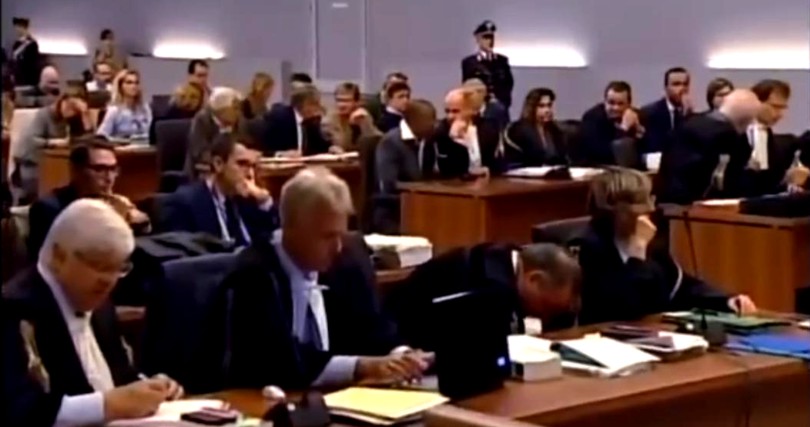
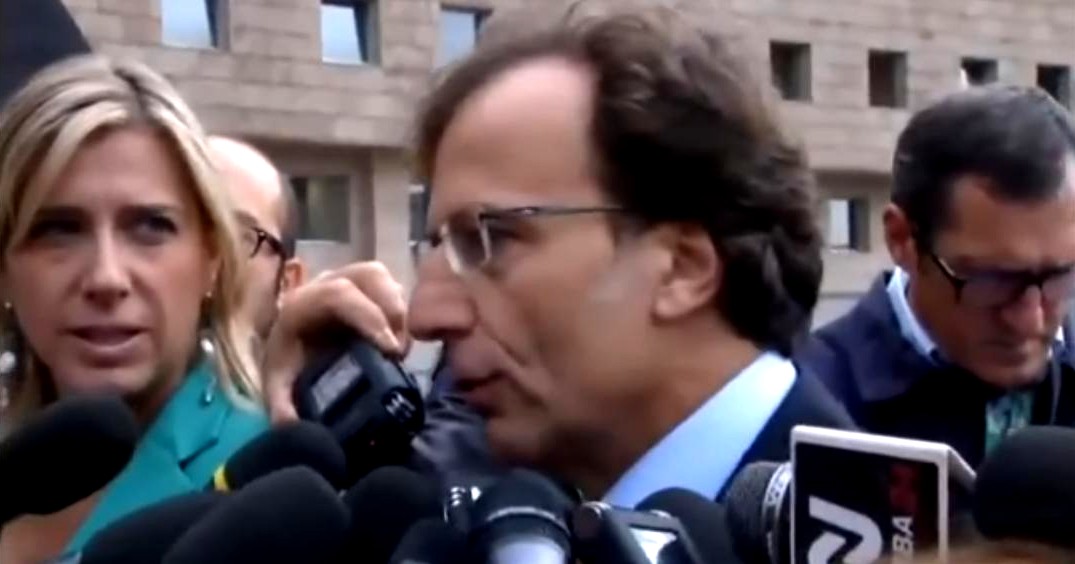
Thursday, December 12, 2013
Why Meredith Might Have Survived If The Attackers Had Cared And Called For Help Very Fast
Posted by Cardiol MD

Malala Yousafzai, world-famous Pakistani victim of a Taliban assassination attempt, survived via a tracheostomy
Absence of full medical picture outside Italy
For this post I wear my medical hat - I am a cardiologist who has had many lives in the balance under my hands.
Parts of the prosecution’s evidence back at trial in 2009 were very stark. Some was presented behind closed doors and with no CCTV feed, although good summaries in Italian appeared in the Italian press.
In Italy the reporting on the trial was several times as deep as anywhere else. There were TV chat shows to review the case as it was being made, and many in Italy read the entire Massei Report when the Department of Justice put it on their website.
Nobody in Italy gives the slightest credence to the theory of the Lone Wolf. Many or most have not even heard about it, and to almost all Italians the idea that Guede could have acted alone (as Knox and Sollecito claimed in their English-only books) would seem absurd.
Many Italians were therefore quick to realize that the Hellmann court did not see the prosecution present its real case, and had been led astray by cherrypicking and innuendo by the defense and an unqualified judge.
In contrast, as I said above, foreign reporting was not deep. The Massei report now being argued against by Knox and Sollecito (yes, this is THEIR appeal) has not yet been carried in English by even one non-Italian media site.
Even the amazing Massei report summary which PMF posters so carefully prepared appeared only here.
How this can affect the January outcome
Among the starkest items of the evidence that are well known in Italy but almost nowhere else are the autopsy findings and the whole-day crime scene recreation testimony.
They were presented (1) only in closed court in mid 2009 and (2) in the attack recreation video shown to the court late in 2009. during Summations. The highly effective video, which took months to get just right, was not entered into evidence and so no jury other than Massei’s has seen it since.
Closing this yawning chasm really matters now because (1) the Supreme Court is in no doubt that Guede did not act alone and (2) the Sollecito and Knox defense attempts to prove one or two other perps staged the attack with or without Guede have fallen off a cliff.
Here is the blunt truth:
- Meredith’s killers at the end inflicted terrible, terrible wounds, and witnessed what she went through.
- There is evidence that Meredith might have SURVIVED if medical help had been called very quickly indeed.
Instead of course her killers cruelly ignored her dying pain, took away her phones, locked her door, and for a while at least they simply went away, while she died.
These truths about the attack and in particular the horrific wounds is relevant both to what Meredith’s killers are guilty-of, and to what sentence would be appropriate if it is confirmed they did the deed.
Brief explanation of the medical facts
While this subject is tough for most people, it has to be viewed objectively by medical-professional care-givers and by judges, and now may be an acceptable time to objectively clarify the subject.
Such information is considered highly relevant in US courts, under Federal Rule 702. Testimony by Expert Witnesses, US state Good Samaritan Laws, and possibly in Italian courts, under Art. 593 of the criminal code ““ Failure to Provide Emergency Assistance.
Even though I can find no references to Failure to Provide Emergency Assistance in the various Motivazioni, many TMJK readers may be interested in this discussion of the subject:
MK’s airway-wound, taken in isolation, was certainly survivable for hours or even days; her superior thyroid artery wound was potentially survivable if simple manual compression was quickly applied there-and-then by anyone present, and urgent professional assistance was then obtained.
MK’s dying occupied at least as much as 15 minutes; it was the combination, and proximity of the 2 wounds that was lethal.
The kind of injury to Meredith’s airway, intentionally inflicted with malicious intent, is well within the spectrum of accidental injuries seen and treated in hospital ERs.
The elective therapeutic procedure - tracheostomy - has consequences very similar both to malicious and to purely accidental airway-injuries.
A tracheostomy is a surgical procedure to create an opening through the neck into the trachea (windpipe).
A tube is usually placed through this opening to provide an airway and to remove secretions from the lungs. This tube is called a tracheostomy tube or trach.tube.
The cutting part of the procedure is called ‘the tracheotomy’; ‘tracheostomy’ is the name assigned when the artificial tube has been inserted.
Tracheostomy is frequently performed in hospitals, all over the world. The subjects of tracheostomy cannot phonate unless the tracheostomy-opening is sealed, typically using a finger to divert the exhaled air through the larynx.
Injuries to the tracheobronchial tree within the chest may occur due to penetrating forces such as gunshot wounds, but are more often the result of blunt trauma. TBI due blunt forces usually results from high-energy impacts such as falls from height and motor vehicle accidents; the injury is rare in low-impact mechanisms.
Injuries of the trachea cause about 1% of traffic-related deaths. Other potential causes are falls from high places and injuries in which the chest is crushed. Explosions are another cause.
Gunshot wounds are the commonest form of penetrating trauma that cause TBI. Less commonly, knife wounds and shrapnel from motor vehicle accidents can also penetrate the airways.
Most injuries to the trachea occur in the neck, because the airways within the chest are deep and therefore well protected; however, up to a quarter of TBI resulting from penetrating trauma occurs within the chest. Injury to the cervical trachea usually affects the anterior (front) part of the trachea.
Notables who survived via a tracheostomy
Many public figures have received tracheostomy in the past. These are perhaps the most well-known:
- Gabrielle Giffords, a Democratic member of the United States House of Representatives received a tracheostomy after being shot in the head.
- Elizabeth Taylor had an emergency tracheostomy for pneumonia in 1961.
- Stephen Hawking (physicist) received a tracheostomy because his muscles of respiration are paralysed by Amyotrophic Lateral Sclerosis (ALS, also known as “˜Lou Gehrig’s disease’)
- Catherine Zeta Jones (actress) when a little girl, contracted a virus that prevented her from breathing normally, and underwent tracheostomy surgery.
- John Paul II (Pope) had an emergency operation after a breathing crisis
Others whose tracheostomy saved their lives
Medical and legal conclusions from this
Repair of Meredith’s airway injury was potentially survivable, given the conditions indicated in the medical text above.
It was the simultaneous severing of her right superior thyroid artery, and the failures not only to seek emergency care, but the abandonment by her attackers that resulted in her death.
The right superior thyroid artery is about the same size as the radial artery of the wrist, which when severed suicidally, leads to a similarly slow death from blood-loss alone.
In Meredith’s case, she inhaled the blood and died less slowly, by coexistent drowning.
The Nencini Court should take her killers’ Failure to Provide Emergency Assistance into account in its decisions, especially if they now try to claim it was just a prank-gone-wrong.
Malala Yousafza who survived via a tracheostomy; the tube is visible below her chin
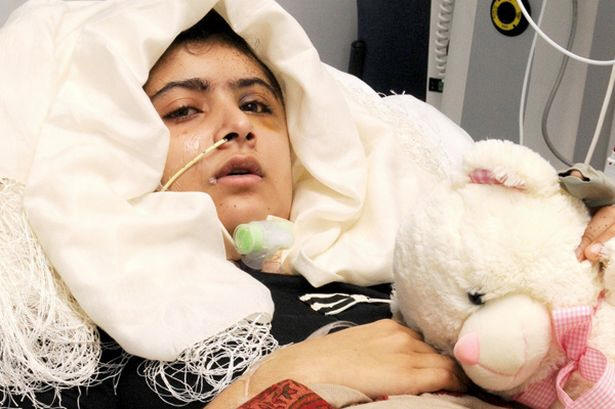
Thursday, December 05, 2013
With Sollecito’s First Plea For Mitigation Seen As A Flop, His Behavior Seems Extremely Suspect
Posted by Peter Quennell

Sollecito headed for Dominican Republic, but stopped pending court okay
1. Post Overview
A week ago Prosecutor Crini had begun a two-day summary of the state’s case so stark and implacable that it had two effects on Sollecito.
He stayed in his hotel on the second day; and he then took off like a rabbit for some destination initially unknown and repeatedly lied-about by his father (see Part 3 below).
One of his lawyers (accidentally?) broke the secret. Sollecito had flown to the Dominican Republic. Where he just happens to have some really unsavory relatives.
2. High Drama In The Nencini Court
Sollecito has not ever taken the witness stand.
And given the minefield his foolish book and media claims amount to, don’t hold your breath expecting otherwise soon. However, last month Sollecito did use the Italian accuseds’ privilege of making an impromptu plea to the judges.
He was not under oath and not subject to cross-examination by the prosecutors. He did not address the copious evidence, and was seen as attempting to humanize himself to perhaps get some years knocked off a final sentence.
As always, Knox forces were left confused, thinking he had somehow helped both of them. But Sollecito repeatedly drew attention to his being an Italian and in effect to Knox and Guede not being Italians, thus once again separating himself from Knox on lines Barbie Nadeau also described here..
Our main poster Yummi was in the court and reported in part as follows:
One of the woman judges kept staring elsewhere and almost never watched Sollecito all the time he was talking. Sollecito’s speech itself was actually not that exciting. It was so overt that he was focused on portraying himself as a person who is so good and cannot hurt anyone, not the bad guy described in the media. The real and only topic of Sollecito’s statement was himself, who he is, his “true” personality, he begged them to look at what a good and suffering a boy he is…
And believe me, Sollecito was just whiny. For a big part of his speech he was just putting distance between who he is today and the person he was when he was 20 years old. He talked about the impossibility of finding a job (the job he would like to have in a corporation, obviously, not just any job) and wanted the judge to project to his condition from that of young Italians who can’t hope to see a future.
Then 10 days ago the skilled senior prosecutor Dr Alessandro Crini fired back, and effectively demolished Sollecito’s premature statement. As we reported, Dr Crini took nearly two days to do that.
Sollecito was again in court on the first day, but was seemingly unable to face Dr Crini’s onslaught on the second day. He remained holed up at his hotel.
Although Dr Crini settled on a lowest-common-denominator motive - a Lord of the Flies flare-up which had escalated into mob violence and the fatal stab to Meredith - his recounting of the evidence and associated behavior of the pack was comprehensive and very hard. Translated from Cronaca:
Meredith was treated “as if she was an animal.” In this way Dr Crini defined the dynamics of the murder of Meredith Kercher during his indictment.
According to Dr Crini, the attack escalated to the point where the attackers felt they “needed to get rid of a girl they had abused”. While Rudy Guede sexually abused Meredith Kercher, supine on the floor of her room, Raffaele Sollecito and Amanda Knox, according to the reconstruction, were at each side of the body of the victim.
“The mouth and neck of the victim were contained in a fierce way to avoid Meredith going berserk and screaming, and when Meredith did in fact manage to scream, she received the final fierce stab to the throat.” Two knives were used in the crime at the house in Via della Pergola on the night between 1 and 2 November 2007”...
Dr Crini referring to the bra clasp of the victim, said that “the presence of the DNA of Raffaele Sollecito is quite certain” and explained at length why there was no “possibility of contamination”.
Amanda Knox was at the scene of the crime, according to the identification made “‹”‹by the scientific police in Meredith’s room of an imprint of a shoe (female size 36-38 according to the results of the analysis)... On the pillowcase, the center of gravity of this bloody history, were found a palmprint of Rudy Guede and this print of the shoe.”
3. High Drama Right After End Of Court
Dr Francesco Sollecito was reported as being shocked by the unrelenting tone of the indictment. However, Sollecito’s plight is not nearly as bad as the ever-stubborn Amanda Knox’s.
Knox has already served three years and was fined heavily for obstruction of justice. She could face another year for that if it is found to have been aggravating. And as the post below mentions, she could face as many as three more charges for aggravating obstruction of justice.
Sollecito in contrast has respected the court by actually showing up, and, unlike Knox, has lately shown restraint in accusing his accusers.
However, the day after Dr Crini ‘s startlingly powerful summary of the case against him, it looked like Sollecito was hastily taking off out of Italy for somewhere.
La Nazione reported that police at Florence Airport had held back a fully loaded Air France flight to Paris while they checked with the prosecution that he was indeed allowed to leave the country. La Nazione said the prosecutors have some concern that he might skip and not come back, but he did voluntarily come back previously from the Dominican Republic, and his family has always ensured some presence in court.
But next TGCom24 reported that Sollecito’s father had claimed that Sollecito had already gone home to Bisceglie, although he is a free citizen still in possession of a passport and can travel anywhere if he wishes.
But then TGCom24 reported that he had indeed flown to Paris, but had turned around and come straight back again, to stay with family friends. And that on 8 December he will sit his final exams in computer science at the University of Verona.
However, soon after that La Nazione reported that Sollecito’s father had been contradicted by his lawyers, and his erratic son had slipped through his fingers and flown “for his work” back to the Dominican Republic. Translation by Jools:
1 December 2013 ““ SCOOP. Denials, lies, game by the defenders. But in the end it’s up to the lawyer Luca Maori to admit: “Raffaele Sollecito returned to Santo Domingo, as anticipated on Friday by La Nazione”
He embarked from Florence’s Peretola Airport and made a stop-over in Paris, from where he then flew to the Caribbean island where he spent the last few months that preceded the start of the new appeals process. “But there is nothing strange - minimizes the lawyer - Raffaele went back to pick up the things he left there, will be back in ten days for the final exams and to await the judgment. With anxiety, but self-assured.”
No escape, just a normal “work” trip. Permissible, since there is no measure that prevents the accused to leave Italy. But the departure of Sollecito, accused of the murder of Meredith Kercher along with former girlfriend Amanda Knox (already sheltered in the U.S.) caused some sneering. And even the agents of the Border Police, when they saw him in front of the [departure] gate, made a phone call to the Procura to be sure whether the journey in the midst of the appeal process was really “normal.”
IN FACT. Sollecito ‘s father, in an understandable effort to defend his already too overexposed son, slipped on the so-called banana peel, placing the young man within a few hours in various locations, but never in the true destination across the ocean: in Verona, preparing for the final exam in computer science in regard to the thesis, or in Paris, but just for a flash-stay from which he was back the day after. At Christmas, maintained the father, Raffaele will return from abroad. Maybe for the last break before the final rush of the Mark II process, which, according to calculations by the Assize Court of Appeal, could be concluded on January 15.
Meanwhile, the hearing on 16 December is for the remaining civil parties, then double date for the defence, (December 17 and January 9) and hearing on the 10 dedicated to counter-argument. With Sollecito in the courtroom, assures the lawyer.
Nothing strange?! Doctor Sollecito lying repeatedly, instead of explaining to the media where Raffaele went, and why he went there, and why it was a huge secret, was VERY strange.
It should have official minds very seriously wondering why. WHAT did Raffaele have to do so secretly in the Dominican Republic - where his notorious mafia relatives from Montreal occupy a town there?
Tuesday, November 26, 2013
Appeal Session #5: Prosecutor Alessandro Crini Concludes, Proposes 30 Years For AK And 26 For RS
Posted by Our Main Posters
Overview
This is the report on the second day of Prosecutor Crnini summarizing the entire case.
This was not attempted at such length at the 2011 Hellman appeal and that panel of judges was perhaps not ever fully in the picture. The first day of the presentation is reported on here.
Real-Time Reporting, Bottom Up
4. Assessment by main poster SeekingUnderstanding
The case put forward by the prosecution and reported to us by Yummi is almost startling in its lucid and concise approach.
It couldn’t be more in contrast to the equivocations and disingenuousness, as well as irrelevant sentimentality that we have unfortunately become used to witnessing. The cutting use of logic was therefore refreshing, and gives grounds for optimism, albeit it tempered by unknowns.
All the issues seemed to be addressed from the base line, as if from primary considerations. And many points were simply politely dismissed as being unimportant to the true case in hand -which is the establishment of the guilt (or not) of the accused. For example, it was great to hear that the reason why the knife had been brought to the cottage need not be examined - it was enough that it was there.
It seemed that where the defence had challenged the evidence, for example suggesting contamination of DNA, it was here that Crini spared no detail, and took time in bottoming out the logic, and dispensing with their points. His arguments certainly carried conviction to me.
I was glad to see motive and behavioural dynamics looked at, as indeed Cassation had requested. It seemed good too that Crini ruled out premeditation, and reduced the dynamics to something highly plausible and believable as well as simple. There are just two points I might observe :
First, it would seem within character for Meredith to have been both open and direct in confronting issues of hygiene, drug use, infringement of privacy and noise etc., (or even theft of rent money, another possibility). I am not convinced that she would necessarily have been aggressively confrontational. Someone who is relaxed within themselves, accepting of their self, is well able to be assertive in a non-provocative manner. That is quite British too - especially old-fashioned English.
Secondly, bearing in mind the possible or probable profiles of the defendants, it would not have taken more than one small trigger of reasonable confrontation to release the consequent temper-tantrum or drug fuelled rage. I do not think we are dealing with something proportionate - and this is also why it escalated in the terrifying way it did. I don’t think it is essential to hypothesize as to what in particular Meredith raised an objection to (e.g. Rudy’s bathroom event). It is probable that Meredith’s concerns were reasonable, and then the overly defensive and angry reaction to any criticism whatsoever was unreasonable. I personally think this is enough.
I liked the way Crini said that even though a source is unreliable or not credible in some ways, that does not mean they do not (inadvertently as it were) give out information that is also true and useful. Possibly other statements from Guede might be taken into account in this way?
As a psychologist, it would seem dialogue with Rudy might yet be fruitful, but, with things the way they remain with the other two, it does not seem the time now for further words. Something else needs to happen.
3. Assessment by main poster James Raper
Crini spent about 10 hours in total addressing the court and was certainly very thorough. Maresca was so impressed that there was no need for him to add anything further.
Crini came to the prosecution case without the baggage of having presented any previous scenario or of having had his reputation sullied and slandered by the Knox PR machine. He reviewed the evidence dispassionately and found it compelling.
Clearly he also found the previous machinations of C&V and the Hellmann court objectionable and went in hard here, even discussing previous cases where Vecchiotti and Conti had goofed up. Hellmann had tried so hard to avoid that coming out during his appeal.
He was not, however, averse to taking a different tack where he thought this was appropriate. A sign of his intellectual honesty which may have impressed the court.
For instance, he thought that there was no need to nail TOD down to 11.30pm as Mignini had sought to do. He allowed for an earlier TOD.
He was of the opinion that coming up with an exact time line for a period in which there is no alibi, and when there is already evidence of involvement in murder, is of only marginal interest.
He spent well over an hour discussing the knife. He did not think it necessary to mull over how it came to be at the cottage. That is speculation that need not detain anyone if the knife is accepted as the murder weapon, and he thinks that on all the evidence it is.
He ruled out premeditation, even as to a hazing, and presented a very simple scenario as to motive and the dynamics behind and during the attack on poor Meredith. Keeping it simple makes it understandable to everyone. Elaborate further and you risk alienating someone who disagrees with the elaboration and thinks they have a better theory.
My only objection is that it is a tad ridiculous to believe that Meredith objected to poop being left in the toilet, the toilet she didn’t use. But yes, the objectionable behaviour of a trio of drunken/drugged up louts invading her space would most likely have triggered argument, unpleasantness and then a fight.
There is plenty of character evidence to support that scenario and with a little imagination, and some recollection of one’s student days, one can easily see how this might have gone. In a way, and Crini admitted to this possibility, Meredith’s own behaviour, or misreading of the situation, may also have been a trigger. Whether one agrees with this or not, it is at least a believable and honest suggestion.
So he set out base camp for the court (bearing in mind that Cassation had suggested that behavioural dynamics be given serious consideration by the appeals court) and whether the judges elaborate further (perhaps by conjecturing a possible range of equally valid motives and dynamics) is up to them.
2. Assessment by main poster Hopeful
Crini is magnificent! He’s absolutely crushing the defense. He nails Knox as having left her bloody shoeprint on the pillow under Meredith.
He accepts Novelli who found Meredith’s trace on the knife. He believes Knox left DNA on the knife. He quotes from differing experts Gill and Balding and says Sollecito’s DNA on the bra clasp stands.
He describes a small, very sharp knife that he believes was used to cut off the bra in several places. He says the knifeprint on the sheet was from the big kitchen knife.
Crini contends that the strong bruise marks around Meredith’s mouth were from restraining her and blocking the scream.
He believes this fight was caused by Meredith angrily reacting to Knox’s constant dirty ways in the cottage and Guede’s nasty toilet habit along with his and Sollecito’s unwanted presence in the cottage that night.
Crini argues a crime of rage when Knox was confronted by Meredith, citing Laura Mezetti’s remarks about the cleaning conflicts. Crini says that Meredith’s scream is what caused the fatal knife blow to silence her.
Not premeditated, the murder was the final result of the perps’ terror that they had gone too far during the raging fight. He’s asking for 30 years for Knox and asks to increase sentence for calunnia to 4 years, inclusive in the 30.
He almost laughs at Knox’s weak excuse over the drops of her blood found in the bathroom, saying she would surely have known if she bled.
He confirms the storekeeper did see Knox early in the morning after the crime. He finds no proof of Sollecito being firmly at his computer sending emails during the crime. He blasts the Knox and Sollecito alibis as being a tissue of lies.
Crini has another ex-Supreme Court justice standing with him in the Florence courtroom! (Baglione). Crini has worked extremely hard. He has conquered this convoluted pack of lies and distortions and his diligence shows. He upturned the applecart of Conti-Vecchioti nonsense and thoroughly redeemed Stefanoni’s findings.
He has completely severed the heads of this Medusa Gorgon mess, Crini is the bomb!
1. Tweets continue from main poster Yummi
114. This means a total request of 30 years for Knox and 26 years for Sollecito
113. [Propose] 26 years for both for the murder
112. The murder is contextual, their was no premeditation, and no futile motive
111. Because of their staging and denials, they should not be given generic mitigation for murder.
110. Requests to increase the penalty for [Knox] calunnia to 4 years
109. But experience tells statements of unreliable perps do contain revelations about the truth. The ‘argument’ between girls, why such context?
108. Rudy Guede has no credibility, even if the Supreme Court is right that this cannot depend on his refusal to answer.
107. Crini cites Laura Mezzetti about the ‘annoyance’ caused by Knox on house cleaning issues.
106. Meredith was the one triggering an argument because of the ‘impolite’ invasion and behavior. She accused Knox .
105. Rudy was not sober, quite high, a bit annoying, and was acting the same disgusting way he behaved downstairs days before.
104. Meredith Kercher was sober, fully awake. The others were at least ‘smoked’, a bit high, Rudy was there in the house.
103. The motive is not futile, the motive is terror, it is the consequence of the prior aggressive action in which they were involved.
102. Nothing points to an agreed plan among the three that run out of control; the first cause was an aggression, a clash, impetus of rage
101. Crini: there is a prosecution duty to conjecture a motive.
100. The blood drop on the tap: a point is Knox does not explain, guesses, while she must be aware that she bled in the bathroom.
99. Crini believes the shoe prints on the pillowcase are from a female’s shoe as suggested by police
98. Knox’s DNA between the blade and the handle (36-i)is very significant. It’s not from sweat or contact.
97. The print on the bed sheet is compatible with the kitchen knife.
96. Crini: we don’t need to figure a reason for a kitchen knife to be carried from one apartment to the other..
95. The bra straps are cut in multiple points, not with a kitchen knife.
94. Sollecito cut her bra with a knife in multiple parts. hold bra to cut it - no Guede’s DNA in that point - used a small very sharp-edge knife
93. Rudy did not stab her, because he wad used both his hands, which were unarmed
92. Wounds indicate she was immobilized by multiple people, they killed her because failing to do so completely, were terrified by her scream.
91. Criticizes Torre’s theory that the large wound could be caused by a small knife: improbable, the wound has clear margins.
90. There were two knifes, one was small, not much fit to kill.
89. Ridiculous to think that Rudy Guede - which she knew - could intimidate Meredith totally to that point. She would react.
88. Specific indicator: no defence wounds; means bruises are not from fight but restraint.
87. Description of bruises and lesions around her mouth, indicates extreme force to prevent from screaming. Rest of body was also immobilized.
86. She was still wearing a blue sweater which was removed subsequently.
85. Analysis of blood drop pattern and position of victim when stabbed; body moved in a different position.
84. Location of crime - space between the bed and the wardrobe - is peculiar, analysed by UACV
83. Crini says will sketch a dynamic of events of the crime.
82. Crini says - implying Vecchiotti, Pascali - some experts should be “hold where they belong”
81. Crini recall Pascali working on the Olgiata and the Claps case (2008, 2010);
80. There is no instance of transfer of Sollecito’s DNA anywhere on the scene
79. Crini cites the Olgiata case.
78. Contamination must be deduced from context of finding and collection. You must think a practical way for Sollecito’s DNA to be transferred
77. Tagliabracci defends Vecchiotti saying the RIS statistical techniques were not used at the time; Crini cites Gill and Balding
76. Guede’s Y haplotype in victim’s vagina alone was used to identify him.
75. Sollecito’s DNA is certainly on the clasp for the police; Vecchiotti doubts but considers X separately from Y haplotype
74. The bra clasp: the first objection was the interpretation of the mixed/complex trace
73. Crini says he learned a bit of genetics working on cold cases
72. Vecchiotti and Tagliabracci have a reliability problem in relation to the case, for different reasons
71. Vecchiotti said she obtained all cooperation she required. Raw data could be accessed by accessing the machine itself as Stefanoni offered.
70. Crini says he found out the negative controls were deposited, the court will find the document of deposit etc.
69. Vecchiotti omitted to note the censures/observations written by the other consultants, this procedure is incorrect
68. Vecchiotti’s approach to the I-trace (refusal to test it ) was ‘ideological’, ‘weak’, ‘insufficient’
67. Interpretation of profile is for complex result. For non-complex profiles there is actually no ‘interpretation’.
66. Crini recalls answers by the RIS, defence tried to elicit approval of CV, but RIS said multiple test only if possible, compromise for result
65. Novelli cited saying the profile of Meredith is certain.
64. Meredith’s profile came out clean on a single amplification, means the trace is clear.
63. The meaning of test repetition is its necessity when you have a ‘dirty’, uncertain sequence like Knox’s profile on the knife
62. Novelli knows very well about double and triple amplification protocols, and Stefanoni knows well too
61. Guidelines are an indication that guide your driver, but then you have to drive
60. Someone who keeps a refrigerator like the one Vecchiotti has, should be less critical about laboratory practice
59. Crini: should we toss any result in the garbage, no matter how important and clear, whenever the test is not repeated?
58. Speaks about the single amplification by Stefanoni versus guidelines.
57. The presence of human DNA in a scratch on the blade of a knife itself is not usual
56. Crini: another introduction specific on DNA; notes btw that the new RIS finding is ‘important’ because adds information
55. Crini makes an introduction about circumstantial evidence
54. Discussion on DNA and remaining evidence will start in 1h.
53. Francesco Sollecito [in interview] was shocked, said he never expected so aggressive arguments from PG [the Tuscany Prosecutor General]
52. Yesterday, Crini spent the first hour to argue about logical ‘method’: how assess evidence altogether, examples, quotes of SC sentences
Wednesday, November 06, 2013
Appeal Session #3: The Carabinieri Labs Report On The DNA On The Knife
Posted by Our Main Posters
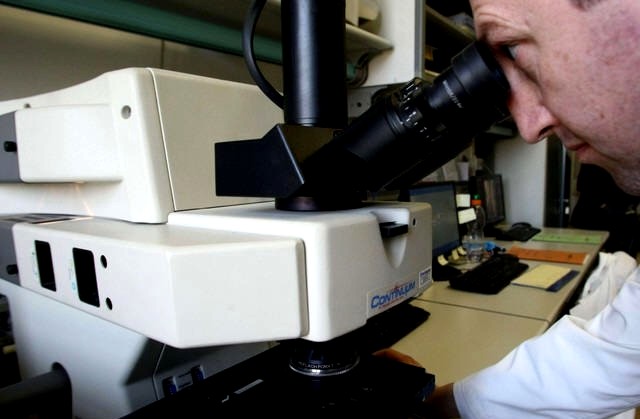
[Above: an image of similar testing in the same Carabinieri laboratory in north Rome]
Final Update
So the court session does not even extend beyond the lunch hour. Good morning Seattle! At this moment it is still only 3:30 in the morning there. Only night owls will know what happened.
Yummi and Mason2 may have more for us, which will appear either here below this final update on in Comments. Also Andrea Vogt and hopefully Barbie Nadeau will be filing longer reports in English. We will also check out all the Italian reporting.
Hard to see any game changers in today’s strong but undramatic testimony. The Carabinieri RIS DNA experts could not be shaken. All momentum remains with the prosecution and with the Supreme Court’s “givens” on the evidence, such as the presence of three attackers in Meredith’s room.
The defenses seem to be giving up. They could have phoned it in. Sollecito lawyer Bongiorno didnt make any new fuss. And Amanda Knox lawyer Dalla Vedova was cut off by the lead judge several times, for trickily going off the point. He really is out of his depth in a criminal trial; at the same time often condescending.
And a seeming big slap in the face for the American defense stooge Greg Hampikian who seems to have illegally colluded with the disgraced Hellmann consultants Conti and Vecchiotti (who were not even mentioned today) when Judge Nencini asked Dr Barni “Would you be able to provide reliable standards without using suggestions from Americans?” Dr Barni responded “Of course”.
And Sollecito “wasted” his statement by whining about his life, showing no compassion for Meredith (despite his claimed visit to her grave), and not answering any of the dozens of open questions. Sollecito really needed to show he is both strong and compassionate and NOT a weakling under the thumb of Amanda - but he seems to have done quite the opposite. The family lawyer must not be too pleased.
Fifth Update
The opening of Frank Sforza’s trial in the same courthouse is postponed, apparently because new information on his campaign to poison opinion against the judiciary and his unsavory connections has been coming in.
Information will be exchanged that is gathered at this trial on mafiosos Luciano Aviello and at Aviello’s own trial for obstruction of justice which is now proceeding in the same Florence courthouse in parallel.
The findings and possible charges on the defamatory and dishonest books by Knox and Sollecito are due about now from the Florence and Bergamo prosecutors. Information gathered in those investigations could also be fed in to this process, or put aside for separate trials.
As both the AK and RS books are bulging with the standard PR talking points (some of which flowed from Frank Sforza and Doug Preston) in a sense it will be Curt Knox, the Mellases, Marriott, Sforza, Fischer and Moore who will be put under the microscope.
Fourth Update
A more detailed report on the DNA phase today from the Andrea Vogt website.
The RIS Wednesday deposited their forensic report on trace 36i, a spot of DNA identified (but not earlier tested) on the kitchen knife alleged to be the murder weapon. “Cento Percento” (100 percent) said Major Berti, discussing compatibility. The RIS found that the DNA was compatible with Amanda Knox, and excluded that it was that of Sollecito, Guede or Kercher.
The RIS expert was asked only a few questions from attorneys and the judge. The judge asked why the RIS had done two amplications of the DNA and not 3 or 4. Major Berti described that two is considered the minimum number of amplifications necessary, according to today’s forensic standards, doing less (or more) might have diminished the reliability of the results. The judge also asked about the age of the equipment used. Berti responded that the forensic kit used this time has been commercialized since 2010 and available for use since 2011.
At one point the judge stopped a line of questioning by Knox’s Rome attorney Carlo Dalla Vedova, who was asking why the RIS described Knox’s DNA as “fluids” when a prior expert had said the trace did not come from blood. Nencini said: That question was not put to the RIS by this court, it was not their job to determine that. The other experts’ reports are in the case files for everyone to read, he noted, adding: “We cannot put words in the mouth of this expert that were said by another expert.”
Third Update
Tweets from our main poster Yummi (Machiavelli)
32. Judge Nencini’s comments were always addressed at Dalla Vedova’s arguments, who was in fact a bit silly
31. The Judge declared the evidence phase closed. Next court dates are 25 November for prosecution argument and 26 for the defences with 16 and 17 December.
30. Judge Nencini asked Dr Barni “would you be able to provide reliable standards without using suggestions from Americans?” Dr Barni: “of course”
29. Dalla Vedova said Tagliabracci was the only Italian source in the RIS report, all others are foreigners, emphasized the American labs…
28. Sollecito said his family absolutely never had issues with justice. And he is a proud ‘member’ of that family
27. He also played the ‘national’ card, as he remphasized ‘I am Italian’ twice and then addressed the court ‘I am an Italian, as you are’
26. Sollecito mentioned the defens’s arguments (he has an orthopedical issue with his foot etc.).
25. The questions of all parties to the experts were intended to elicit information to be used in arguing the unrelated previous finding
24. He mentioned Meredith’s name only once, to say he barely knew her.
23. Sollecito talked with a faint voice, a long speech in which he described himself as a victim.
22. The Carabinieri say that there are only a few governmental laboratories which have the 17025 certificate (the Carabinieri and the Police)
21. Nencini stops Dalla Vedova, points out that scientific community is international
20. Dalla Vedova tries to elicit that the good standards are not the Italian ones.
19. The RIS obtained the ISO9001 certificate in 2008, and a more specific certificate in 2012.
18. Bongiorno asks RIS to explain why two amplifications are recommended.
17. Prosecutor Crini asks if there are criteria to distinguish which labs or which experts are more competent.
16. Speaking about their software which allows to weight probabilities of attribution.
15. They note that three alleles which are ‘alien’ were drop off in one duplicate.
14. The biologic method has a ‘consensus’ interpretation and a ‘composite’ interpretation, two ways to interpret the double result.
13. They describe the methods employed, the ‘biologic’ method and the ‘statistic’ method.
12. Absence of any male trace stands out as a feature of the sample (all contributors are females)
11. They extracted two profiles in a duplicate in agreement with experts of all parties
10. Dr Berti says the sample was a low template. They have a strategy to obtain reliable results.
9. Points out that documentation says sample 36i comes from insertion of blade in the handle.
8. Dr. Berti summarizes the recovery of sample in Vecchiotti’s lab.
7. Bongiorno says Sollecito intends to release a spontaneous declaration. He will do that after the experts testimony.
6. Berti and Barni enter the court.
5. Many law students from the Florence school for Magistrates are in court to follow the hearing.
4. Sollecito had managed to enter the courtroom from side entrance eluding photographers. Carlo Torre arrives in court.
3. Giulia Bongiorno & Raff kiss each other. Giulia, Raff & Father have a worried discussion
2. I wonder… will the court withdraw his passport?
1. Raffaele Sollecito is in courtroom. Walking in empty room, few people waiting. Hearing will start 1/2h probably
Second Update
Tweets from Patricia Thomas (AP) and Sabina Castelfranco (AP)
Patricia Thomas “@MozzarellaMamma: RaffaeleSollecito - Amanda Knox and I were very carefree and isolated in our love nest.
Sabina Castelfranco “@SCastelfranco: Sollecito says he is not the assassin he has been described as. Says Amanda was his first love
Patricia Thomas “@MozzarellaMamma: RaffaeleSollecito - I have been described as an assassin. Amanda Knox was my first real love in life
Patricia Thomas “@MozzarellaMamma: RaffaeleSollecito takes stand to make statement, starts complaining about media descriptions of himself
First Update
Tweets from Barbie Nadeau
35. Nov 25 - prosecution; 26 - civil; Dec 16 - Sollectio; 17 - Knox; Jan 9 - rebuttals, 10 deliberation and verdict
34. Dec. 16, 17 closing arguments for Knox and Sollecito
33. Judge closes hearing for day, says closing arguments begin Nov 25, 26, must find December dates to conclude
32. Sollecito finishes by thanking judges for their time, judge tells him he can intervene any time during rest of appeal until they deliberate
31. Sollecito says he hates the fame, how it has hurt him, how it isn’t fair
20. Sollecito says he has a difficult time looking for work, people associate him with the murder of meredith kercher
29. Sollecito says that even on his vacation in Dominican Republic, he had to defend himself like a public figure, his life is judged by all
28. Sollecito repeats twice that he never met Rudy Guede, how nothing in original trial was based on reality.
27. Sollecito takes trip down memory lane, highlights worst parts of trial and incarceration for him, has not mentioned meredith kercher yet
26. RaffaeleSollecito - I feel a persecution. It is a nightmare, beyond all imagination.
25. RaffaeleSollecito—close to tears as he testifies to court “I am fighting every day to bring out the truth”
24. Jury totally transfixed by sollecito declaration, can’t take their eyes off him
23. Sollecito thanks and defends his family, calls amand knox his first love
22. Judge asks for Sollecito declaration now
21. Judge asks about relevance of kit they used, how old technology was, etc.
20. Judge asks what minimum testing is for validation of DNA, RIS says “at least two”
19. Judge tells Dallavedova he cannot put words in mouth of new expert that were said by previous experts, this is fresh analysis
18. Judge clarifies that RIS was not asked to reanalyze work that has been done, but to test a sample that has not been tested.
17. Dallavedova essentially kicks goal into own net, not doing amanda knox any favors by making RIS defend methods used in original conviction
16. Dallavedova manages to get RIS expert to defend Italian methods, says they are in line with global standards, this was crux of 1st appeal
15. DallaVedova asks about international protocol, backfires slightly b/c RIS expert says he doesn’t want to dis italian methods, are valid too
14. Bongiorno hammers point that international standards in DNA must be followed ([claims]they were not for meredithkercher sample on tip of knife)
13. Jury in new appeal trial for amanda knox; sollecito look totally lost, lots of daydreaming during DNA testimony, nail biting, looking around
12. Bongiorno asks RIS expert specifics of amplification of sample with an eye to trace with meredith kercher DNA that was amplified many times
11. Prosecutor asking for clarification on how samples are tested, how RIS experts are qualified, etc.
10. RIS: DNA testing as important to exclude suspects as to confirm them, in this case no question that amandaknox DNA is on knife, others’ not
9. RIS: testifying about international standards necessary to validate DNA, how they used in their examination of this particular spot on knife
8. Sollecito listening attentively and jotting notes as RIS expert testifies about the knife
7. RIS: the spot they tested on the knife (near handle) matched definitively the DNA of amandaknox in double tests
6. RIS: the spot they tested on the knife did not match meredith kercher or rudy guede or sollecito after double testing
5. RIS: Experts tested spot “H” [?] on the knife (the spot near the handle) for both the victim meredith kercher and suspect
4. RIS: DNA analysis showed no x chromosome, i.e.: no male chromosome in sample they tested on knife
3. RIS: essential in DNA testing to double test samples to validate results
2. RIS expert: explains technical details of testing DNA, how much is needed, how it is tested
1. Judge says he wants to hear from RIS experts first and then sollecito can give his declaration
Initial Post
Well, that first shot from the court at the top sure is a surprise, and maybe bad news for Amanda Knox. Where are Sollecito’s other lawyers, Bongiorno and Maori? Presumably they are off to the side talking. .
In tweets Andrea Vogt has mentioned that she is reporting for the BBC and the Associated Press TV; reporters cannot have bigger clients or more global reach than with those two. This is from Andrea Vogt’s website.
Court is now in session. Day will begin with RIS forensic debates. Raffaele Sollecito will make a statement later in the day.
Sollecito arrived in the Florence court of appeals looking relaxed and ready to make his case before the court later in the day. His father, Francesco Sollecito, also appeared visibly happy to have his son back in arms reach, after an extended stay in the Caribbean. A large number of his friends were in the audience.
Forensic experts for the defense Walter Patumi, Carlo Torre and Sarah Gino were also in attendance in preparation for debate on the new DNA evidence tested by the RIS in Rome, specifically, trace 36i on the kitchen knife alleged to be the murder weapon. RIS say the DNA profile is that of Amanda Knox. Arguments today will mostly about how it might have gotten there, with prosecutors attempting to place it in the context of the murder and defense attorneys arguing it could have been transferred during normal domestic use of the utensil.
Next hearings are Nov. 25-26, with a verdict expected in mid-December.
Monday, October 28, 2013
Some Hard Truths Sollecito PR Puppet Sharlene Martin Omits In Her Misleading Invite To The Congress
Posted by Our Main Posters
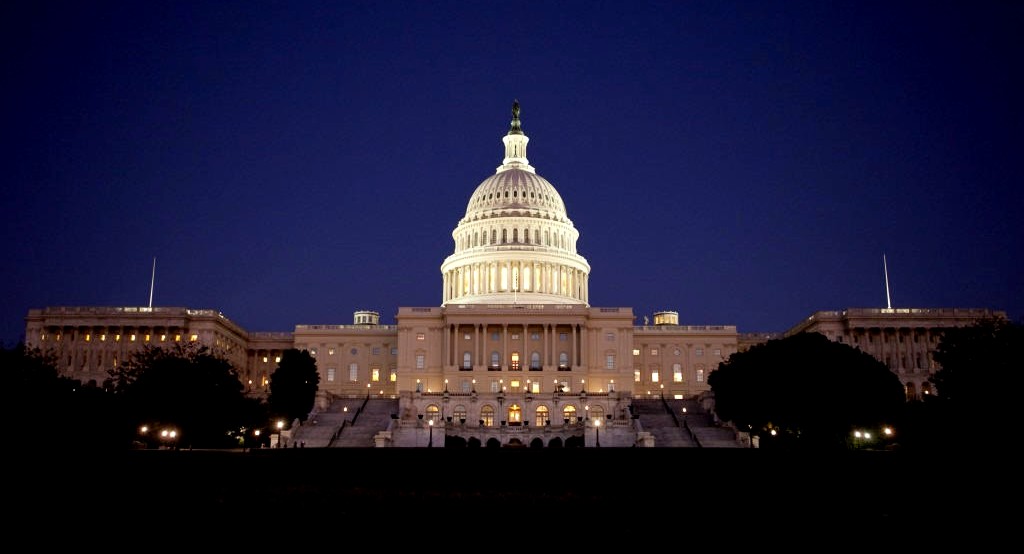
Dear Sharlene Martin:
Please dont say we didnt warn you before. In this notice of a Congressional “briefing” (read: paid highly misleading PR) you once again gloss over a number of hard truths.
You might well be advised to head to higher ground. The US Congress and the Administration will soon be left in no doubt about the correct facts of the case against Sollecito and Knox, as Italian law enforcement start to reach out to their counterparts in the FBI, and as they charge mischief-makers with obstruction of justice in the case, and as more and more reporters in the US and UK media wisen up.
Against your client, this was always a very strong case. And this alone has your client cooked. Here are some other corrections and correct background to the false claims you have just made.
- 1) Senator Cantwell was already burned by associating too closely with your radioactive group. She spoke out daffily for Amanda Knox several years ago - and then, duly warned, she went quiet again. Ask her congressional staff for the story to that. And read our past heads-ups for Senator Maria Cantwell here and here.
2) Your client Raffaele Sollecito wrote the most defamatory and misleading book about an Italian case in many years. Key claims have been repudiated by his own father on Italian TV. As his case is ongoing Sollecito is meant to fight it in the (very fair) Italian courts, not poison public opinion to lean on those courts. Sollecito is being considered for charges of obstruction of justice for the book and much else in the media, and you and the publishers may be charged too.
3) This is NOT a third trial. It is a re-run of a first appeal. If the very well-run and highly decisive Massei trial of 2009 had been run in the US or UK it is hard to see what grounds if any, any appeal judge would accept for appeal. Your client would be near the end of his sixth year in prison. And it is known that the Hellmann Appeal and the DNA consultancy were both bent by Sollecito’s and Knox’s own teams (corrective measures have been taken with more to come) so the 6-year process is essentially your own team’s fault.
4) John Douglas’s highly self-serving chapters on the case are among the silliest ever written in a crowded field. The very vain Douglas starts with the totally false premise that Knox was forced to confess after many many hours, and from there on out it is all downhill. He takes a faux position essentially identical to that of Saul Kassin. Read about Kassin’s own spurious and highly self-serving take on Knox’s “forced confession” here and here and here.
5) Steve Moore lacks the correct expertise to analyse this case and he was never the ace crime scene investigator you claim. A dozen or more posts here show how unreliable and rambling he is. Among other things he appeared on a disastrous panel (with a team almost identical to yours - and an audience that peaked at 35) at Seattle University a couple of years ago. Read what two very astute lawyers thought of his man-in-a-bubble performance here and here.
6) The hapless Michael Heavey was officially reprimanded for his bizarre intervention in the case. He was also on the disaster of a panel at Seattle University. He has got the basic facts wrong again and again and again. Here he is getting the facts wrong five years ago. Here is his association with Frank Sforza, a key mis-stater of the key facts of the case and serial defamer of the Italian officials involved, who he was financially supporting - and who now faces three separate trials of his own.
7) And the hapless John Q Kelly? This is a tough field in which to come out ahead but John Q was perhaps the silliest talking head for Knox and Sollecito on TV. He babbled on in the media about a railroading that never took place. Read how even his own colleagues considered him to have been duped here and here.
A Congressional briefing panel that is not made in heaven, that is for sure. Stay tuned. There is more to come.
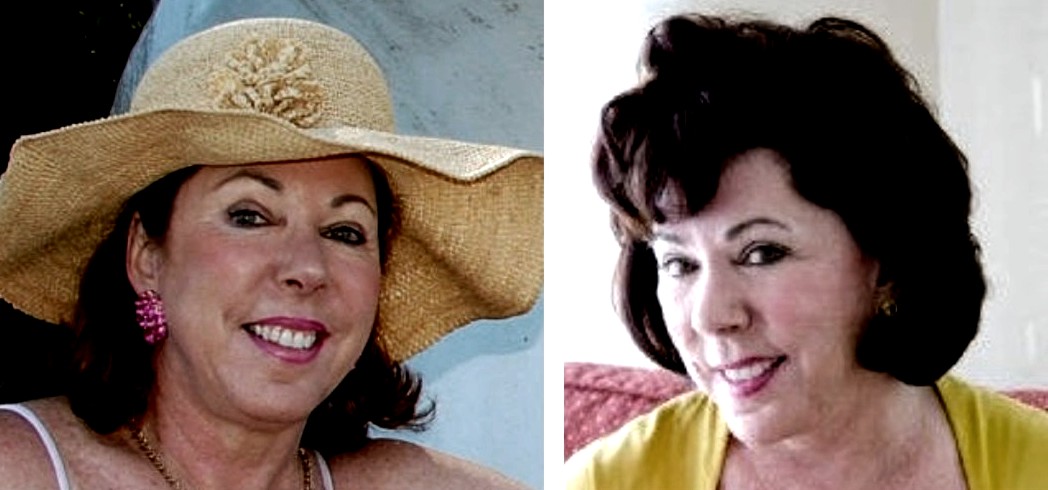
Tuesday, October 08, 2013
Questions For Knox and Sollecito: Why Claim Rudy Guede Did It Alone When So Much Proof Against?
Posted by Marcello
1. Problems Of Your “Guede did it alone” Mantra
Your attempts to frame Guede for the entire attack sound racist, and they fly in the face of a multitude of hard facts.
Why are you and your more untethered supporters arguing to the media that Rudy Guede alone attacked Meredith (he could not have), that he was a drifter (he wasnt), a burglar (he wasnt), and drug dealer (he wasnt), and that his DNA traces are “all over Meredith’s room” (they werent)?
There are surprisingly few DNA traces of Guede in there, and outside Meredith’s door there is only evidence of (1) his prior use of the south bathroom, and (2) his shoeprints headed straight for the front door.
There is zero evidence that Rudy Guede was ever in the shared bathroom (the one with Sollectio’s bloody footprint on the bathmat) and zero evidence he was in Filomena’s room (the one with the broken window and the mixed DNA of Meredith and Knox).
2. Evidence Against You Is Far, Far Stronger
Explain if you can about Sollecito’s bloody footprint. Explain if you can about the evidence of cleanup. Explain this and this about your multiple contradictory alibis.
Explain if you can why YOUR own witnesses Alessi and Aviello were such disasters for your side in court. Explain your cell phone actions (or non-actions) and the timing and content of your phone calls, and your computer actions (or non actions).
Explain why in Sollecito’s book he claims he sent several emails throughout the night; but there zero records of such emails with his email provider. Explain why both Sollecito and Knox framed Dr Mignini.
There are three compelling reasons above all why the Massei court and the Supreme Court will remain totally unbending on the point that Guede did NOT attack Meredith alone, and that it had to be a pack attack on Meredith.
- One is the full day of closed court testimony at trial by crime-scene experts from Rome who accounted for every point of evidence in Meredith’s room with a depiction of a 15 minute pack attack involving three people. This seriously upset the jury and your own defense was left essentially speechless.
- One is the prosecution’s video shown in closed court during Summations of the recreation of the attack on Meredith, which accounted for every point of evidence with a 15 minute pack attack involving three people. This seriously upset the jury and your own defense was left essentially speechless .
- One is that the entry of an attacker via Filomena’s room is so absolutely unbelievable. Your own defense always knew this, and barely tried to make that sale (hence the witnesses Alessi and Aviello).
There are seven other routes for a burglar to enter the house, all of them faster and quieter and five of them darker. You can see five in these images below: two via the east windows, three up onto the balcony and into the house via the louvre door or the kitchen window.
All seven routes would be obvious to any burglar, long before he walked all the way around the base of the house to beneath Filomena’s window (which he did several times in your scenario).
3. The Numerous Questions From Which You Hide
On or after 6 November you have both promised to appear in the appeal court in Florence. You are apparently too nervous to face cross-examination under oath, but you have said you intend to try to explain things.
- 1) Rudy Guede had been to the apartment at least twice already on prior occasions and knew the boys who lived in the lower story. Why did Guede choose to NOT break-in to the lower story where he knew (or could ascertain) that all four boys were away on holiday, and therefore could break-in and rummage with some certainty of not getting caught?
2) Why did Guede choose to break-in to the upper story of the villa mid-evening, when he surely knew Knox and Kercher would be staying at the villa for the holidays and could have been there or returned at any time to “catch him in-the-act”?
3) Surely Guede would have verified that no one was present by circling the cottage and checking if any lights were on in the windows? But Guede “missed” the really easy way in: the balcony in the dark at the rear, used in 2 burglaries in 2009.
4) If Guede did circle the cottage to make sure no one was there before attempting the break-in, why would he then choose the most visible and more difficult path of entry through a second story window, as opposed to the more hidden and easier path of break-in at the back of the villa, which he would have noticed while circling the villa?
5) Why would Guede choose to break-in through a second story window that was highly exposed to the headlights of passing cars on the street as well as exposed to night lighting from the carpark?
6) Ms. Romanelli testified that she had nearly closed the exterior shutters. Assuming her memory is correct, there is no way a burglar could easily verify if the windows were latched and if the inner scuri were latched to the window panes, which would make access to the window latch impractical unless one was armed with a core drill or an ax. Why would Guede, who was certainly familiar with such windows, choose to attempt the break-in through a window that he could not easily verify would allow him quick access?
7) Assuming the shutters were closed, Guede would have to climb up the wall and open the shutters before smashing the window with the rock. The night of the murder, the grass was wet from rain the previous day. Why was there no evidence of disturbed grass or mud on the walls?
8) Guede had Nike sneakers, not rock climbing shoes. How did he manage the climb up the wall with that type of footwear?
9) If the shutters were closed, or somewhat closed, how did Guede manage to lift himself up to the sill with only an inch of sill available to grab onto?
10) Assuming Guede opened the shutters, how did Guede verify if the inner scuri where not latched to the window panes, which would prevent access to the window latch? There was no light inside Ms. Romanelli’s room to reveal that the scuri were ajar.
11) Assuming Guede managed to check that the inner scuro behind the right-hand window was not latched, how did he manage to break the glass with a 9 lb rock with one hand while hanging on to the sill with the other?
12) Assuming Guede managed check that the right-hand inner scuro was not latched, how did he break the glass with the rock without having glass shards fly into his face?
13) If Guede climbed down to the lob the 9 lb rock at the window from 3 meters below, how would he do so to avoid glass shards raining down on him?
14) If Guede climbed down to the lob the rock at the window from below, why would he choose a 9 lb 20 cm wide rock to lob up to a window 3 meters above him, with little chance of striking the window in the correct fashion?
15) If Guede climbed down again and climbed back up to the carpark (up a steep slope with slippery wet grass and weeds) to lob the 9 lb 20 cm wide rock from the car park, why is there no evidence of this second climb down on the walls?
16) Why did Guede choose a 9 lb 20 cm wide rock to throw from the car park, given that a large, heavy rock would be difficult to lob with any precision? Especially considering that the width of the glass in the window pane is only 28 cm wide, surely anyone, experienced or not, would have chosen a smaller, lighter rock to throw with greater precision.
17) If Guede lobbed a 9 lb 20 cm rock from the car park, such a lob would require some velocity and therefore force. Guede would have been roughly 11-12 feet away from the window, in order for the lob to clear the wood railing at the carpark. If the rock was thrown with some velocity, why is the upper 1/2 of the glass in the window pane intact, without any fracture cracks at all?
18) If Guede lobbed a 9 lb 20 cm rock from the car park, such a lob would require some velocity and therefore force. Why is there so little damage to the scuro the rock hit, so little damage to the terrazzo flooring impacted by the rock, and so little damage to the rock itself, which surely would have fractured more on impact with a hard terrazzo floor?
19) Why was there no evidence of glass shards found in the grass below the window?
20) If Guede climbed the wall to open the shutters, climbed down and up to the car park to throw the rock, then climbed back down and up again to the window, how does he manage to hoist himself onto the sill without cutting himself on the glass that was found on the sill?
21) If Guede climbed the wall to open the shutters, hoisted himself onto the sill, tapped the glass with a 9 lb rock to lightly break the glass in a manner more consistent with how the window was broken, why did he throw the rock into the room, rather than let it fall into the grass below?
22) Why was no dirt, grass, muddy shoeprints or similar trace evidence found on the window sill?
23) Why was no dirt, grass, muddy shoeprints or similar trace evidence found in Romanelli’s room?
24) If Guede climbed the wall to open the shutters, climbed down and up to the car park to throw the rock, then climbed back down and up again to the window again, hoisted himself onto the sill without cutting himself on the glass that was found on the sill, unlatched the window and stepped inside Filomena’s room, how did he manage to get glass on top of Romanelli’s clothing that was found under the window sill?
25) Why would Guede, who would have spent a good 10 minutes trying to break and enter with the climbing up and down from the carpark, waste valuable time throwing clothes from the closet? Why not simply open the closet doors and rifle through the clothes without creating more of mess?
26) Why did he disregard Romanelli’s laptop, which was in plain view?
27) Why did Guede check the closet before checking the drawers of the nightstand, where surely more valuable objects like jewelry would be found?
28) Why were none of the other rooms disturbed during the break-in?
29) Assuming Ms. Kercher arrived to the cottage after Guede’s break-in, presumably when Guede was in the bathroom, why did she not notice the break-in, call the police and run out of the cottage?
30) Assuming Guede was in the bathroom when Ms. Kercher returned, why go to the extent of attacking Ms. Kercher in her room rather than try to sneak out the front door, or through the window he had just broken, to avoid if not identification, at least more serious criminal charges?
31) Assuming Ms. Kercher was at the cottage while Guede broke-in, why did she not call the police the moment she heard the rock crash through the glass, loudly thud to the terrazzo floor and investigate what was happening in Romanelli’s room while Guede was climbing back down from the car park and climbing back up to the window?
32) Assuming Ms. Kercher was at the cottage while Guede broke-in, Guede could have been on the sill already because he had tapped the glass with the 9 lb rock to break it. Therefore perhaps Guede was already partially inside Romanelli’s room when he was discovered by Ms. Kercher. In this case Guede follows Ms. Kercher to her room in an attempt to dissuade her from calling the police and the assault ensues. But then, if this scenario is correct, when does Guede have time to rifle through Romanelli’s clothing and effects?
33) Why is there a luminol revealed footprint in Romanelli’s room that has mixed traces of Knox’s and Kercher’s DNA ?
34) Why does this footprint not match Guede’s foot size?
35) If multiple attackers were required to restain Ms. Kercher, holding her limbs while brandishing two knives and committing sexual violence, then who else was with Guede and why no traces of this 4th (or more) person(s) were found, either in shoeprints, footprints, fingerprints, DNA or otherwise?
36) If Guede and others were involved in the assault, why has Guede not acknolwedged them, and instead consistently hinted that, and finally admitting that Sollecito and Knox were with him during the assault?
37) If Guede and others were involved in the assault, why do the other shoeprints, footprints, DNA traces and fingerprints all point to Knox and Sollecito being present during the assault, in one way or another?
4. Italy Is Not Buying The Racist Mantra
If your racist mantra remains “the black guy did it alone” and “Italians are corrupt and stupid” you need to PROVE that. If you cannot answer all of these questions above, this will deservedly cook you.
You could be facing 30 years with the “mitigating factors” canceled and the new penalties you will incur for your dishonest books and PR campaigns.
[Five easier ways in: 3 via balcony (note two drainpipes, window grid below), 2 via side windows]
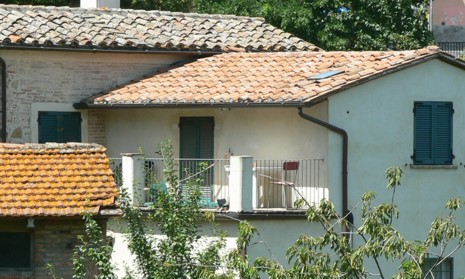
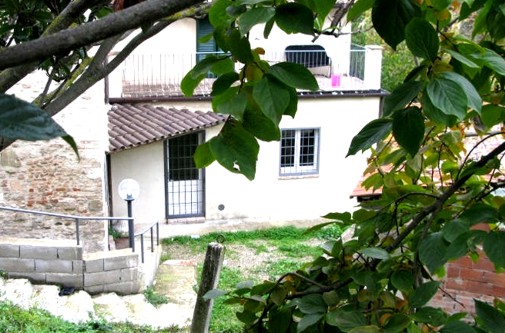
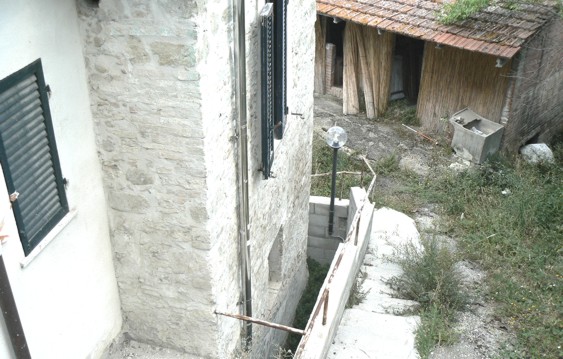
Friday, September 27, 2013
Questions For Sollecito: Why So Many Contradictory Explanations Of How DNA Got On The Knife?
Posted by SomeAlibi
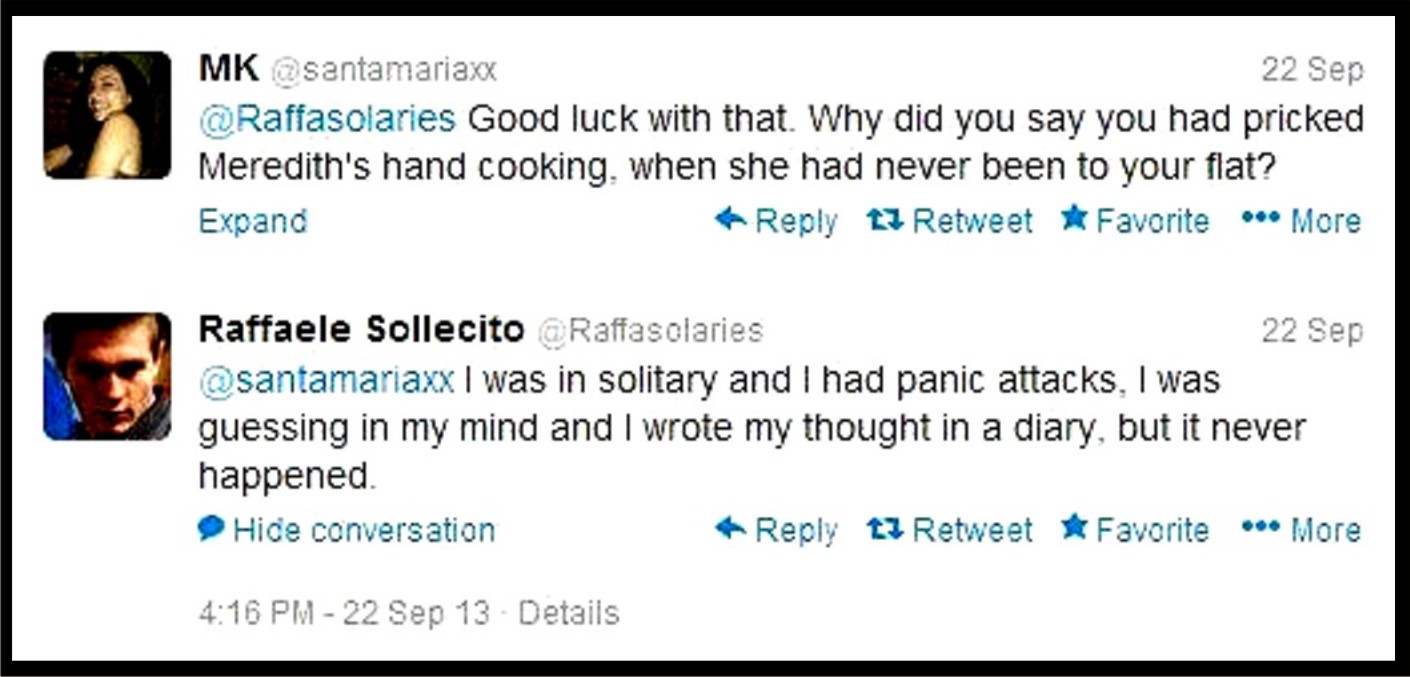
It is no secret (except seemingly to him) that Sollecito’s book and web postings will once again land him in court.
This trial will be separate from the main appeal though the prosecution office will be the same. It will be for alleged contempt of the court in serially mis-stating the evidence and accusing many officials of crimes in an attempt to get public opinion to lean heavily on the courts.
The Amanda Knox brigade has been trying that too, and look at how well that is working out!
Here is one seemingly perfect example of how Sollecito (finally responding to the pressures and pleas of his discombobulated lawyers?) may be trying to wind things back. You will recall that news of the discovery of a large knife in his kitchen drawer with Meredith’s DNA on it was related to Sollecito while he was in his prison cell, just over two weeks after the murder.
As much as the news initially panicked him, shortly thereafter on November 18th, 2007, he seemed relieved to have realised how Meredith’s DNA could have come to be on his kitchen knife after a session of, in his written words, “thinking and remembering”. He wrote in his diary:
The fact that there is Meredithʹs DNA on the kitchen knife is because on one occasion, while we were cooking together, I, while moving around at home {and} handling the knife, pricked her hand, and I apologized at once but she was not hurt {lei non si era fatta niente}. So the only real explanation for that kitchen knife is this one.
And that was it: Raffaele had “fortunately” remembered how he had “pricked” Meredith’s hand and that explained the DNA. He remembered it in precise detail - thank heavens for that!
The problem for Raffaele was that he didn’t know at this stage that the DNA was in a microscopic groove on the blade and not on the tip. The story made no sense. Worse, he was also flatly contradicted by the flatmates, the friends and even Amanda: he had never been cooking with Meredith and his story was therefore impossible as well as implausible. And since he was a murder suspect, the memories and all their specificity which would have given him an alibi for the DNA, became highly suspicious.
Unfortunately, Raffaele chose to remain silent thereafter and never testified, as was his right, at his trials.
Subsequently there were many months of Team Knox-Sollecito denying that Raffaele meant Meredith, in contradiction of all plain logic when reading the simple words in his diary. No, said the online apologists, in fact he meant Amanda’s hand and in some way he had thought that maybe Meredith’s DNA had been on Amanda and could have transferred. It wasn’t his fault that his theory was wrong, it was just an honest memory of being with Amanda and nothing suspicious at all.
On Twitter on September 22nd, Raffaele decided, probably unwittingly as is his wont, to blow that theory up. He was asked about the diary entry by Twitter user MK @santamariaxx and responded thus:
He replied as in the image above.
So, he didn’t really mean Amanda at all (thank-you for all the wasted hours of excuse making for Raffaele to those protagonists of that particular theory), but now we learn it was a false memory about Meredith that never happened.
But let’s unpick this because it’s far from a single mis-remembered sentence or action. This was a contemporaneous diary entry made barely two or three weeks after such a cooking event could have happened and it was a multi-faceted event with multiple actions. He was clear and precise about what happened in detail. Now, he is quite clear the whole thing never happened:
- 1. He said he was cooking together with Meredith - but that never happened
2. He recalled himself “moving about” during the cooking session - but that never happened
3. He remembered the location “at home” - but was never there in this context
4. He remembered putting a knife that he was holding into / onto Meredith’s hand - but that never happened
5. He remembered actively apologizing to Meredith for that clumsy act - but that never happened
6. He remembered the act of them examining Meredith’s hand and mutually discovering that she had not been hurt - but that never happened
7. He remembered that this was the real explanation of the kitchen knife - but it never happened
Sollecito was on his own in a cell, not under interrogation, and spending time “thinking and remembering” on November 18th. What he remembered, in detail, was a multi-part sequence of events with a girl who had been murdered barely two weeks before. He remembered the minutiae of what happened and its sequence when he believed he needed to provide an alibi for the identification of the DNA on his knife.
None of Amanda Knox’s vagueness about these memories - they were particular and specific in the finest detail. So fine and specific that when he was caught out that this could not have happened, those details looked highly like someone seeking to convince precisely because of the particularity of the details. It was in the time-honoured form: “no, no - it definitely happened, because I specifically remember”..... 7 distinct and separate memories and the sequence in which they occured.
But all those things never happened according to Raffaele Sollecito in 2013.
Knox and Sollecito have never stopped the self-serving lies and flat contradictions of themselves. Not now, even after all this time, even after one them is permanently stained as, at a minimum, a convicted liar who criminally tried to frame a man for murder. Sollecito, “not hiding” in his secret location, can’t stop either. Little good it will do either of them. Finally, justice is coming and the lies will be at end. I’d almost feel sorry for him, if he wasn’t then and remains now, an inveterate liar without the honour to face justice in the country of his birth.
Monday, August 05, 2013
A New DNA Analysis Strongly Implicating Sollecito Seems to Have The Defense Forces Rattled
Posted by The Machine
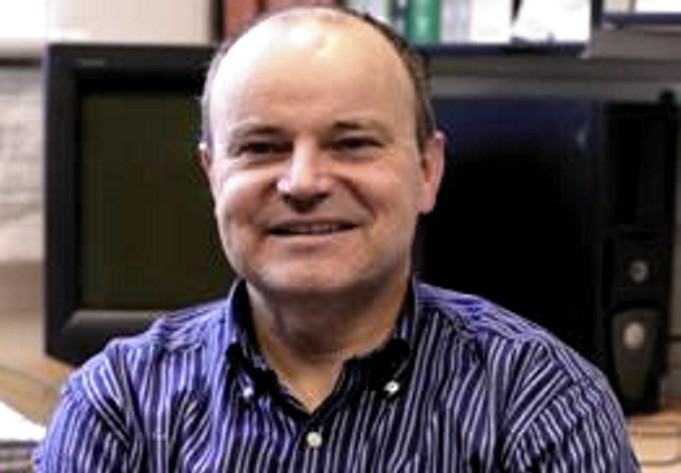 F
F
[Above: DNA professional Professor David Balding; at bottom, DNA amateurs Barras and Halkides]
The Supreme Court has already shown strong disdain for the myriad dirty tricks of the defense forces, and legal action is building against them (see our post next week).
That the defense forces in this context attempt to put out even more misleading information seems a sure sign that their backs are to the wall, and that they will risk anything to again tilt the playing field.
Colin Barras
“Software says Amanda Knox’s DNA wasn’t at crime scene” This highly misleading header appeared above an article by Colin Barras on the New Scientist website last month.
It should be pointed out that Colin Barras isn’t a DNA expert. He has never been involved in a forensic investigation. He has never provided expert testimony in a court case. He is simply a freelance British science writer with degrees in geology, palaeobiology and palaentology - the palaentology of Jurassic sea urchins.
Barras explains in his article that Professor David Balding, a Professor of Statistical Genetics at University College London, has developed new software for interpreting Low Template DNA evidence.
This is true. However, Barras then goes on to make the following claim:
Using the software on data from Knox’s trial suggests that it was very unlikely that her DNA was at the crime scene.
In fact Professor Balding and his software suggested nothing of the sort. Professor Balding was referring specifically to an incomplete DNA profile on Meredith Kercher’s bra clasp which has never been at much issue.
He did not refer to all the other DNA evidence that was collected at the crime scene and presented as evidence in court.
It’s important to clarify what this crime scene actually is, because the defense forces of Amanda Knox and Raffaele Sollecito constantly move the goalposts in relation to this case depending on who they are talking about.
When they talk about the evidence against Knox and Sollecito, their version of the crime scene is strictly limited to Meredith’s room. When they discuss the evidence against Guede, their version of the crime scene includes other rooms in the cottage i.e. the other bathroom and the hallway. And when they discuss the collection of the DNA evidence, their version of the crime scene suddenly includes the flat downstairs, even though no crime was committed there.
According to Wikipedia “A crime scene is a location where a crime took place (or another location where evidence of the crime may be found), and comprises the area from which most of the physical evidence is retrieved by law enforcement personnel, crime scene investigators (CSIs) or in rare circumstances, forensic scientists.”
The Scientific Police from Rome and the Forensic Police from Perugia clearly regarded most of the cottage as a crime scene. The Forensic Police from Perugia catalogued potential evidence by placing letters and numbers in different rooms in the cottage. (The Massei report, p200).
The Scientific Police then collected DNA and forensic evidence from Meredith’s room, Amanda Knox’s room, the hallway, the kitchen, the blood-spattered bathroom, the other bathroom which was used by Filomena and Laura and Filomena’s room where the break-in was allegedly staged. That’s a total of seven rooms.
And the Scientific Police didn’t actually claim at the trial that the incomplete profile on the bra clasp belonged to Amanda Knox. It was Sollecito’s forensic expert Professor Vinci who claimed that Knox’s DNA was on Meredith’s bra. His findings were presented in court at Rudy Guede’s fast-track trial in 2008.
So Colin Barras has used a straw-man argument. He has completely ignored the six pieces of DNA evidence that place Amanda Knox at the crime scene on the night of the murder.
According to the prosecution’s experts, Amanda Knox’s blood was found mingled with Meredith’s blood in three places in the bathroom: on the ledge of the basin, on the bidet, and on a box of Q Tips cotton swabs.
Knox’s DNA and Meredith’s DNA was also found mixed together in a bare bloody footprint which was revealed by Luminol in the hallway and a mixture of Knox’s DNA and Meredith’s blood was also found on the floor in Filomena’s room.
Amanda Knox’s DNA was found on the handle of Sollecito’s kitchen knife and a number of forensic experts - Dr. Patrizia Stefanoni, Dr. Renato Biondo, Professor Giuesppe Novelli, Professor Francesca Torricelli, Luciano Garofano, Greg Hampikian and Elizabeth Johnson - have all confirmed that Meredith’s DNA was on the blade.
Dr Stefanoni analysed the traces on the knife six days after last handling Meredith’s DNA. This means that contamination couldn’t have occurred in the laboratory. Meredith had never been to Sollecito’s apartment, so contamination away from the laboratory was impossible.
The knife is still in evidence and remains compelling evidence against Knox and Sollecito.
Ominously for Knox and Sollecito, the Supreme Court explained how DNA evidence should be assessed in court i.e. contamination must be proven with certainty not supposition.
The burden of proof is on the person who asserts contamination, not the person who denies it.
In other words, if the defence lawyers claim the DNA evidence was contaminated, they must describe the specific place and time where it could have plausibly occurred.
Nobody has ever proved that the bra clasp and knife evidence were contaminated and it’s difficult to see how the defence lawyers’s experts are going to do this at the new appeal.
Chris Halkides
Chris Halkides is one of Amanda Knox’s most effusive supporters. He has pontificated extensively about the case on his blog View from Wilimington and on other Internet websites.
On 30 July, he was finally prompted to post an interview with Professor Balding done some months previously. I suspect Halkides had been very keen to interview Professor Balding after reading Colin Barras’ article on the New Scientist website; but was holding back on posting it because it went against his own claims.
Indeed, his interview has turned out to be quite a slap in the face for the Friends of Amanda and Colin Barras, because Professor Balding categorically described the DNA evidence against Sollecito to Halkidis as “strong”.
It’s worth summarising Professor Balding’s impressive academic record which for this case is topnotch, perhaps the best .
He is currently the Chair of Statistical Genetics at University College in London. He has a first-class honours degree and a PhD in Mathematics. And he has written many journal articles and co-authored a number of books on a range of topics.
This is apparently the whole of Chris Halkides’ interview with Professor Balding:
TUESDAY, JULY 30, 2013
An interview with David Balding
Part 36 in the Knox/Sollecito case
Professor David Balding recently published an analysis of the bra clasp DNA. It may be helpful to explain some terms found in this article. John Butler (Fundamentals of Forensic DNA Typing) defines the likelihood ratio (LR) as “The ratio of the probabilities of the same event under different hypotheses, and he explains that the prosecution’s hypothesis is usually the numerator, and the defense’s hypothesis is usually the denominator. A ban is a unit of expressing the weight of evidence (WoE). This scale is logarithmic; a likelihood ratio of three bans is equal to one thousand. Some months ago Dr. Balding was kind enough to answer some of my questions about this work.
Does Raffaele Sollecito¹s DNA fall into the category of low template DNA, and if so, should two separate amplifications have been run?
There’s no strict definition of “low-template” but broadly yes the peaks associated with Sollecito are low (but not those associated with Kercher, they are high). Conti-Vecchiotti discuss a threshold of 50 rfu below which a peak should not be relied on; in the UK, that threshold was used in the past but nowadays as techniques have improved the threshold is often lower, 25 or 30.
However that doesn’t matter here as all the peaks associated with Sollecito are well above 50: there is a 65, a 70 and a 98, all the 26 other peaks are above 100. So it is not extremely low template - many low-template cases are successfully prosecuted in the UK even when some peaks fall below the threshold and so are discounted. In this case all the peaks associated with Sollecito seem clear and distinct so I think there can be no concern about the quality of the result as far as it concerns him or Kercher.
Replication is generally a good thing and is nowadays done in most cases in my experience, but not all - one problem is that replication splits the sample and so can increase the chance of not getting a usable result. But although replication is desirable it is not essential. (In a sense there already is replication, because each of the 15 loci is an independent test.)
This is all a matter of weight of evidence, which Conti-Vecchiotti paid no attention to: if you measure the weight of evidence properly, that accounts for the extra assurance that comes from replication and gives a stronger result (or conversely gives a weaker result if there is not replication). But because Sollecito is fully represented in the stain at 15 loci (we still only use 10 in the UK, so 15 is a lot), the evidence against him is strong even allowing for the additional uncertainty due to non-replication.
Are there contributors other than Raffaele Sollecito and Meredith Kercher to the autosomal profiles? If so, how does the presence of this additional DNA affect the bra clasp as evidence?
Yes, Conti-Vecchiotti identified a further 12 above-threshold peaks at alleles that could not have come from Sollecito or Kercher. They correctly criticised the scientific police for ignoring these: many do appear to be stutter peaks which are usually ignored, but 4 are not and definitely indicate DNA from another individual. The extra peaks are all low, so the extra individuals contributed very little DNA. That kind of extraneous DNA is routine in low-template work: our environment is covered with DNA from breath and touch, including a lot of fragmentary DNA from degraded cells that can show up in low-template analyses.
There is virtually no crime sample that doesn’t have some environmental DNA on it, from individuals not directly involved in the crime. This does create additional uncertainty in the analysis because of the extra ambiguity about the true profile of the contributor of interest, but as long as it is correctly allowed for in the analysis there is no problem - it is completely routine.
Are there contributors to the Y-STR profile other than Raffaele Sollecito? If so, how does the presence of this DNA affect our interpretation of the bra clasp as evidence?
I haven’t looked closely at the Y evidence - there seems no need for it because the autosomal evidence is overwhelming for the presence of DNA from Sollecito. But from a look at Conti-Vecchiotti, it seems to back up the conclusion from the autosomal profiles: Sollecito’s alleles are all represented and these generate the highest peaks, but there are some low peaks not attributable to him; so at least one of the additional contributors of low-level DNA to the sample was male.
The bra clasp was collected about 47 days after the murder, and it was found in a different location from where it was initially observed. In the interim many people entered the cottage and items from her room were removed. Are these concerns sufficient for the clasp to be excluded as evidence?
The only worry would be if somehow DNA from Sollecito was brought into the room and deposited on item 165B. I don’t know enough about what happened to say if that was likely but I’d guess that people walking in and out of the room etc would be unlikely to do that.
The clasp was collected with gloves that were not clean, not with disposable tweezers (videos here and here). The glove was handled by more than one person. Are these concerns sufficient for the clasp to be excluded as evidence? If not, should the clasp be given less weight as evidence because of them?
Same comment - the only concern is if any of this could have transferred DNA from Sollecito onto item 165B.
Would you care to comment on the storage of the clasp after the forensic police tested it?
I know nothing about it.
Did you analyze the electronic data files? Did you examine the laboratory¹s own protocols and machine logs?
I have only seen the epgs for the autosomal DNA profiles of 165B. There is an unclear version of them in the Conti-Vecchiotti report, but Prof Vecchiotti kindly provided me with a clean set.
Did you examine the negative controls?
No
Fellow main poster Stilicho highlighted the most important conclusions from this interview on the PMF Forum where the quality of the DNA discussion is very informed.
The interview contains a few things that have been vigorously denied by the FOA:
The 50 RFU level is not sacred or inviolable.
It is improbable that Sollecito’s DNA got there by secondary transfer or by contamination.
The likelihood that the DNA on the bra clasp is Sollecito’s DNA is “overwhelming”.
...the interview doesn’t contain anything not already known to both sides but it contains several key elements that are not accepted by both sides.
Chris Halkides asked two-part leading questions and didn’t get the answers that would be needed to continue to falsely assert that Sollecito’s DNA is not abundant on the clasp or that, if it was there, it likely got there by some other route.
All the other inferences about environmental contamination are irrelevant to Balding’s main point: it is Sollecito’s DNA on that clasp and it didn’t get there by accident.
Final Thoughts
Some credit must go to Chris Halkides for finally posting the interview with Professor Balding even though it categorically said the DNA evidence against Sollecito is strong. I’m not sure he’ll be invited to any FOA events in the future.
Shame though on Colin Barras, for writing such a misleading article, and for using a straw man argument to highly misrepresent the DNA evidence against Amanda Knox which was then deliberately fed to the Italian media.
He completely ignored the six pieces of evidence that place her at the crime scene on the night of the murder. He also completely ignored the most important of Professor Balding’s findings. ie that the DNA evidence against Sollecito is strong.
This finding implicates Knox and places her at the crime scene when Meredith was killed, and makes a mockery of Barras’s headline that suggested otherwise.
[Below: the wannabe crime-scene DNA experts Colin Barras, left, and Chris Halkides, right]
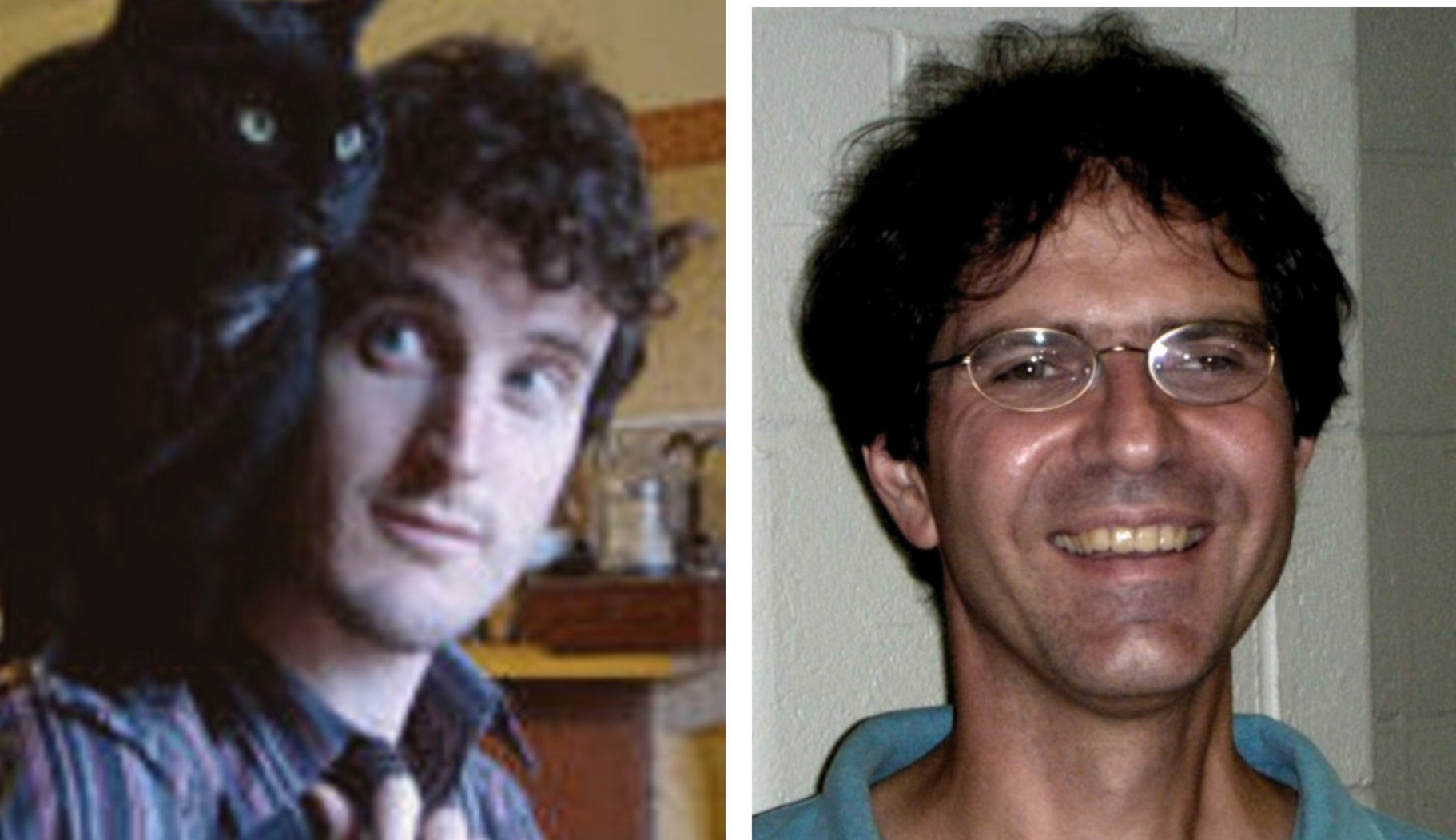
Saturday, July 06, 2013
Crazed Rant Against Judge Massei Expected to Hurt Prospects For Both Sollecito And Knox
Posted by Peter Quennell
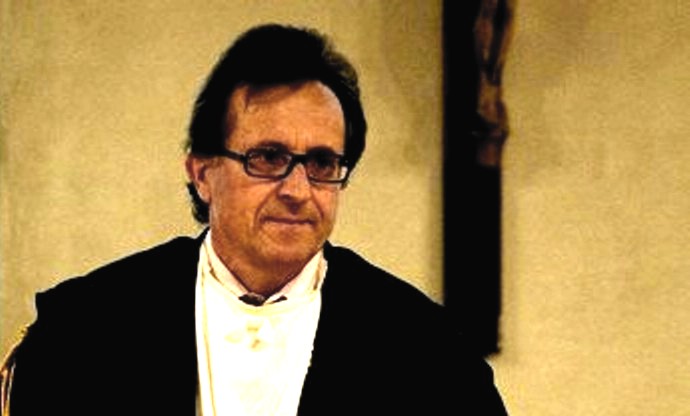
This is what we are hearing from informed readers in Perugia on the rant we translated for the post below.
It is believed that neither RS’s father nor his lawyers nor the Knox people have any control now over him. He is right now quite a loose canon, and very close to finding himself entirely on his own.
There is widespread outrage at the attack on Judge Massei (image above) who is known as a kindly and courteous man, and a very good judge. Correctly understood, he gave the two quite a break in 2009 with the “mitigating factors” and placing of the main blame on Rudy Guede.
Judge Massei knows about this attack and it appears he will take action against it. It is expected to result in further consequences for Sollecito. The attack seems unprecedented in the US and UK as well as in Italy.
The attack seems more evidence of the contempt of the court for which Sollecito is already under investigation in Florence by the SAME chief prosecutor who will organize the prosecution team for the re-run of the appeal. It almost makes inevitable that Cassation’s hard line will be reflected in the outcome of that appeal.
As to what inspired it, Sollecito is universally regarded locally as a wimp, a weak character, who was under Knox’s control during the attack on Meredith she organized, and has been outshone by her since. (His book actually says this in places.) In the crisis that is the Cassation ruling, he wants to show her above all that he has a personality, and thinks that insulting the judiciary is the way to prove it.
Thumbing his nose at Knox? Macho strutting to win her back?
Knox is said to be under very tight control, so presumably we wont be getting her take on it any time soon.

